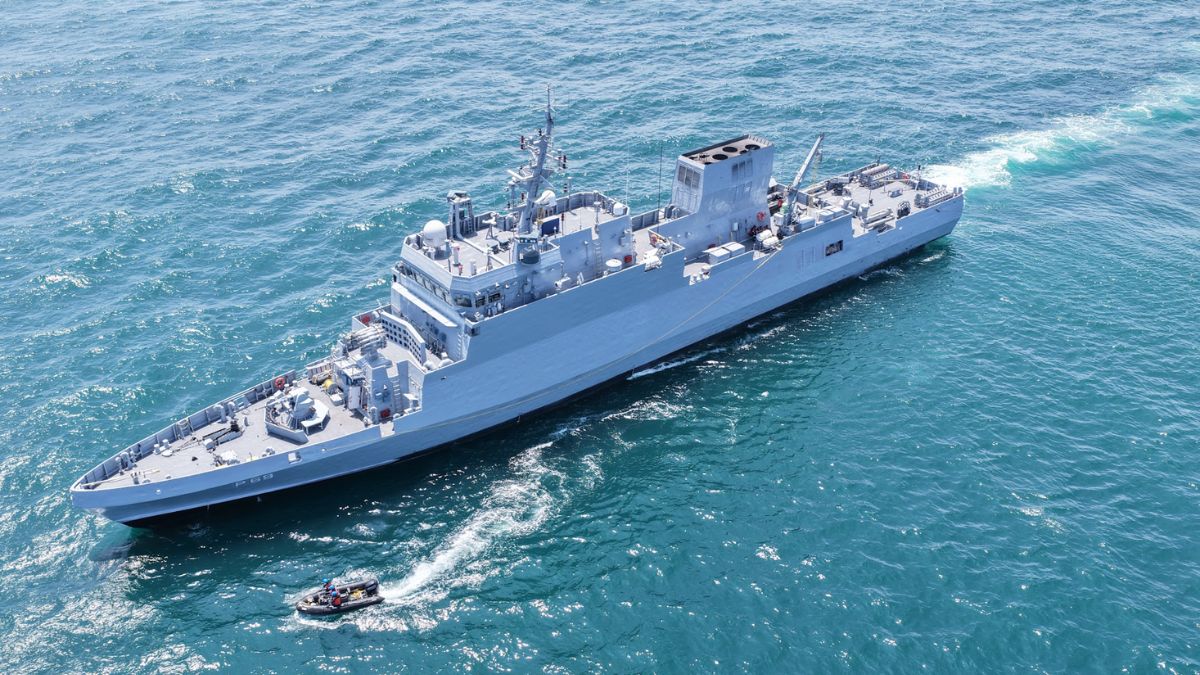India’s naval modernisation drive will take another step forward on Monday (October 6, 2025) when the Indian Navy commissions INS Androth, the second Anti-Submarine Warfare Shallow Water Craft (ASW-SWC), at the Naval Dockyard in Visakhapatnam. The ceremony will be presided over by Vice Admiral Rajesh Pendharkar, Flag Officer Commanding-in-Chief of the Eastern Naval Command.
The addition of Androth marks a continuation of the Navy’s steady fleet expansion, which has seen a series of advanced indigenous warships enter service this year.
How does INS Androth enhance India’s coastal defence?
Built by Garden Reach Shipbuilders and Engineers (GRSE), Kolkata, INS Androth is designed to operate in shallow coastal waters where conventional vessels cannot manoeuvre effectively. Equipped with advanced sonar systems and lightweight torpedoes, the craft will play a critical role in detecting and countering enemy submarines in littoral zones, an increasingly vital theatre of operations in modern naval warfare.
With over 80% indigenous content, the ship represents a significant achievement in local shipbuilding. Its construction integrates Indian-made steel, sensors, communication systems and weaponry, underscoring the Navy’s shift towards self-reliance under the Aatmanirbhar Bharat initiative.
How does the timing matter amid Pakistan’s Hangor-class submarine deliveries?
The commissioning of INS Androth comes as Pakistan is taking deliveries of its long-delayed Hangor-class submarines from China — eight vessels forming the core of Islamabad’s next-generation undersea fleet.
For India, the timing is strategic. The induction strengthens the Navy’s anti-submarine warfare grid in the Arabian Sea, ensuring persistent surveillance and denial capability against adversarial submarines operating from Karachi and Gwadar.
Together with INS Arnala and the forthcoming series of ASW-SWCs, Androth will provide India with a layered shield along its western seaboard, integrating with P-8I Poseidon aircraft, MH-60R Seahawks and Varunastra torpedoes. This expanding ASW network allows the Navy to monitor choke points, protect critical sea lanes, and maintain deterrence amid Pakistan’s growing dependence on Chinese platforms and maintenance supply chains.
What does the induction signify for India’s indigenisation push?
The commissioning of Androth reinforces the Navy’s commitment to expanding its indigenous capabilities. It follows the induction of INS Arnala, INS Nistar, INS Udaygiri and INS Nilgiri, reflecting a balanced approach to fleet modernisation across the surface and undersea spectrum.
GRSE’s leadership in the ASW-SWC project demonstrates how Indian shipyards are now capable of delivering complex warships within ambitious timelines. The partnership between naval designers, public-sector shipyards and private suppliers has helped establish a domestic ecosystem capable of sustaining India’s maritime expansion.
What does this mean for India’s maritime strategy?
The addition of Androth strengthens India’s coastal security posture amid growing challenges in the Indian Ocean Region. With China expanding its undersea footprint and Pakistan fielding Chinese-origin submarines, India’s ability to dominate the shallow-water domain has become a strategic necessity.
By combining technological innovation with indigenous production, the Navy’s new platforms ensure faster maintenance cycles, reduced dependence on foreign suppliers and enhanced readiness for anti-submarine warfare.
Together, these developments signal India’s intent to not only defend its coastline but also project stability across the wider Indo-Pacific.
